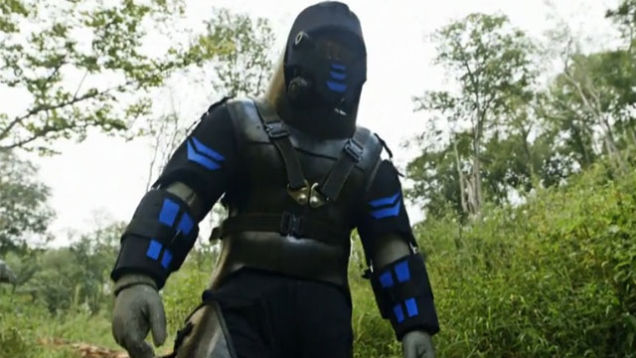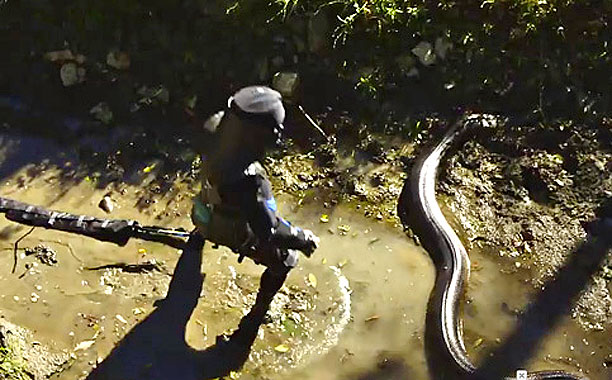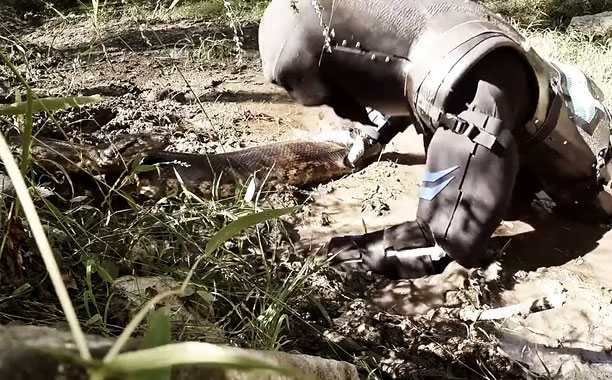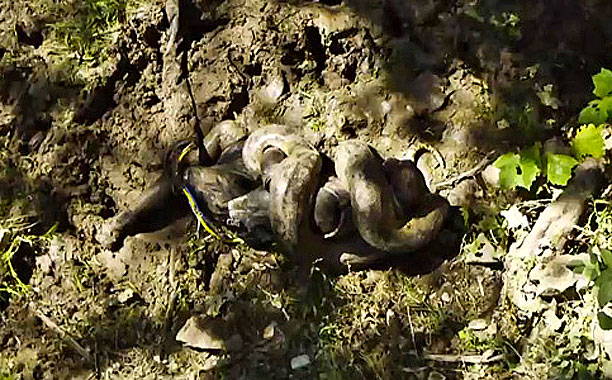
It started out like a nightmare. A ragtag team of experts and environmentalists braving black waters, giant spiders and predators galore in an effort to track down the world’s largest snake in the Earth’s most dangerous habitat, the Amazon. What resulted was not quite what was advertised but still astonishing, especially for carbon fiber enthusiasts.
Eaten Alive, a two-hour special set in the Amazon’s Floating Forest, premiered Sunday night at 9 P.M. on the Discovery Channel. It followed Paul Rosolie and his crew as they hacked, slashed and waded their way through dense wilderness and soggy terrain. Their goal was to find and capture a mythical green anaconda that had previously eluded Rosolie once before, and one that would be large enough to, as the name suggests, and practically promises, “eat him alive.”

[SPOILER ALERT], Rosolie was hardly consumed.
Since its broadcast debut, everyone who spent Sunday evening sitting on the edge of their seats have now taken to Twitter to express their disappointment with the show’s overall premise.

What gets lost in all of this however, is the true feat that was featured at the end of the show. Where Rosolie wasn’t exactly imbibed, he was definitely constricted. (I guess the name Squeezed and Survived wasn’t quite as hype-worthy.) I don’t know about you, but I don’t believe it’s any small accomplishment to be hugged by a bear-sized snake that constricts with the pressure equivalent of having an elephant sit on your chest.
And, much like the failed premise of the show, what was most astonishing is what didn’t happen as a result.
While the nearly 20-foot green anaconda was squeezing the life out of Rosolie, likely exceeding the previously recorded account of 90 PSI — it didn’t quite wrap around the pressure plate so the data was inconclusive — the conservationist’s ribs went un-cracked and his bones unbroken, all thanks to a carbon fiber suit that flexed but never fractured.
“If I didn’t have that suit, my rib cage would have lasted 30 seconds,”
Rosolie exclaimed, just after his team pulled him free.
And it’s no wonder. Prior to the stunt, the suit underwent rigorous testing. One such test included wrapping a pair of heavy-duty ropes around the carbon fiber vest and recreating the constriction of over 300 PSI by playing an intense game of tug-of-war between two tow trucks.
The vest held strong. No cracks. No compromise.
After that, in an effort to see just how much force the torso could take, they attempted to destroy it. Expecting splinters, the suit held firm, “barely scratched,†at over 1000 pounds of pressure, even forcing the two tow trucks to tow one another instead.
With all that being said, one could even argue that, had Rosolie worn the carbon fiber arm guards, he might have actually had the opportunity to be eaten alive since he requested that they be removed right before the encounter. (Rosolie eventually tapped out for fear of a broken arm.)

It’s currently unclear whether Rosolie’s experiment can be considered a true success. He continues to claim that the purpose of the show was to shine a spotlight on one of the world’s most wondrous locations in hopes of promoting conservancy and not to actually be eaten by a snake. Either way, for better or worse, people are talking.
Maybe next time Discovery can come up with a title that’s a little more accurate and a little less sensationalized, so that the audience can spot the true star of the show. Carbon Fiber Alive sounds pretty good to us.
For more on Eaten Alive, you can visit Discovery’s official website. Or you can catch an encore this Saturday at 8 P.M.